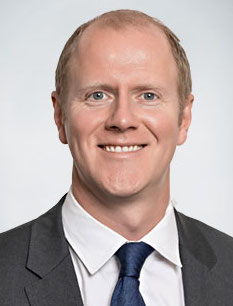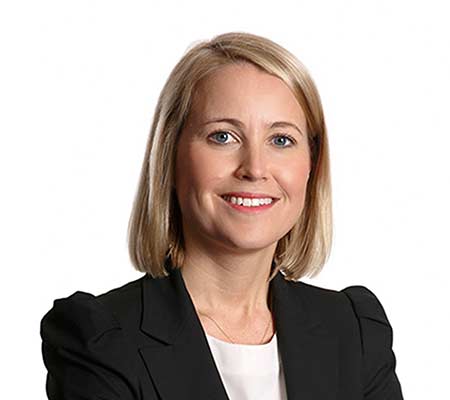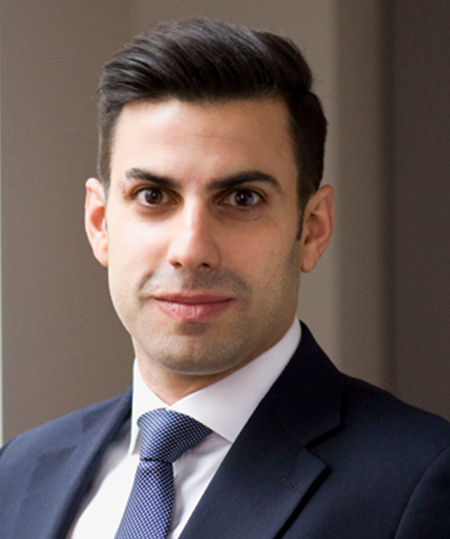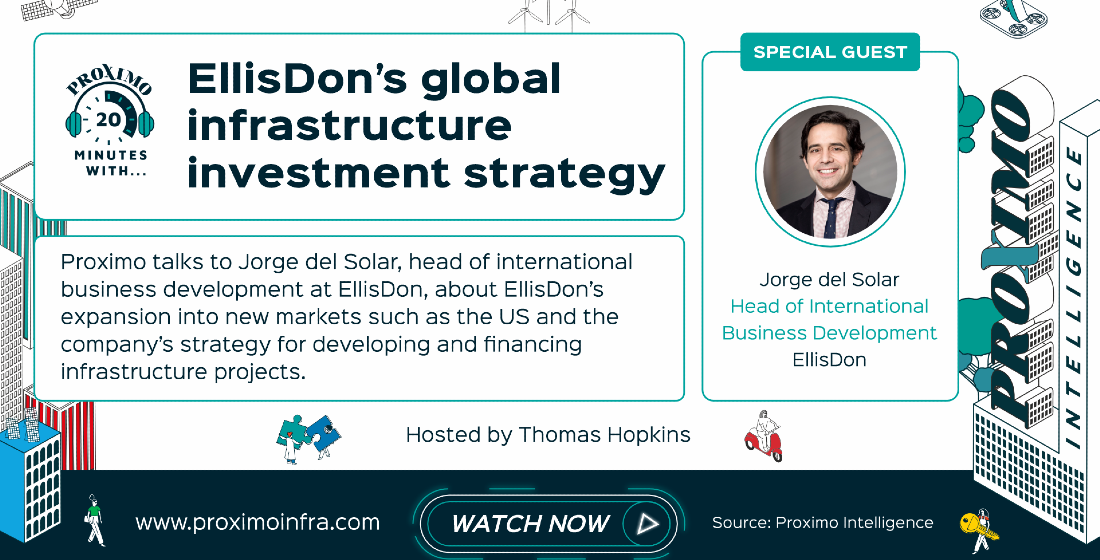Infra investment resilience: testing pandemic immunity
Recent changes to risk perception, perceived debt and equity appetite for certain infrastructure asset sectors and the growing ESG movement look set to outlast the pandemic. In a roundtable sponsored by international law firm Paul Hastings, infrastructure debt and equity investors debate lessons from the pandemic, ESG compliance and building a diversified portfolio in a post-pandemic infrastructure investment landscape.

A roundtable supported by
One of the most surprising infrastructure deals of 2020 was the sale of an 81.2% stake in Portuguese toll road operator Brisa by Arcus Infrastructure Partners and Jose de Mello Group to a consortium comprising APG, the National Pension Service of Korea, and Swiss Life Asset Management. This was no distressed asset sale. That a traffic volume-based asset should sell for a good price – rumoured to be based on a total Brisa enterprise value of €3 billion-plus – at the height of the first global lockdown raised eyebrows. That the acquisition was partially financed via a €750 million seven-year debt facility was even more surprising. Neither should have been given the asset’s solid long-term fundamentals.
Infrastructure asset resilience has been proven to another level by the pandemic; with many assets backed by a degree of income stream certainty, either now or post-pandemic or both, equity investors and lenders have been willing to provide extra liquidity to ride out the economic fallout caused by lockdown.
Nevertheless, the pandemic has changed the infrastructure investment landscape. Traditional infrastructure asset risk perceptions and labels – core or non-core – for many sectors have changed and will stay changed. Investor appetite for ESG-friendly assets has ballooned and with that is coming more regulation on ESG compliance. Fibre, data centres and renewables have been the big sectoral winners, the pandemic putting accelerant on a demand trend that was already in place.
Despite those changes, and arguably in part because of them, there has never been a stronger focus on asset fundamentals on a deal-by-deal basis – nuance is everything. So where are some of the world’s biggest debt and equity infrastructure investors looking for opportunity in 2021 and how, if at all, has their attitude to risk assessment changed?
Panellists:

Annette Bannister, Head of European Infrastructure at MetLife Investment Management

Floortje Brouwers, Senior Vice President Infrastructure Debt, GIC

Steven Bryan, Partner, Paul Hastings

Ian Harding, Co-Managing Partner, Arcus Infrastructure Partners

Emma Howell, Partner, Head of Asset Management, Federated Hermes Infrastructure

Phillip Hyman, Managing Director, DC Advisory

Derwin Jenkinson, Partner, Paul Hastings

Lee Mellor, Partner, Ancala Partners

Andrew Morris, Senior Principal, Infrastructure and Real Assets, CPP Investment Board

Geoffrey Strong, Senior Partner, Co-Head Infrastructure and Natural Resources, Apollo Global Management
Proximo: Does the pandemic provide any real lessons about infrastructure investing? Are the lessons different for debt and equity investors? And has the pandemic changed the way investors look at risk?
Annette Bannister: The one fundamental lesson is that despite all our modelling, things happen that we don’t expect to happen. We, as debt investors, will always run our sensitivities on new deals and look at things that we think could reasonably go wrong, but no one was expecting a pandemic where pretty much the whole world stopped moving.
But the pandemic has also shown that infrastructure is a really resilient asset class – our portfolios have held up really well through this crisis, although there have been assets and sectors that have been hit harder than others.
Transportation in general has been hit, with airports as a sub-sector hit hardest. Could that have been modelled for? Not really – no one runs sensitivity models based on a 95% decline in passenger numbers because no model would survive that. So how does that affect how we look at risk in the future? Do we need to think about things like increased liquidity facilities if there is something like a pandemic on the horizon? I don't know – we haven't got there yet. But I think there's probably more to think about here.
Proximo: Pre-pandemic, in traditional risk management terms, you would have had a well-balanced portfolio. Is your portfolio still as balanced as it was? Are you looking at changing that balance?
Annette Bannister: No, I don’t think we are. We've got a huge portfolio – approximately $30 billion of assets that are really well spread across sectors and also across geographies – so we’re happy with the balance at the moment. There will likely be new or emerging sectors in the market that investors take into their portfolios going forward though, such as data centres and fibre for example.
Andrew Morris: Like MetLife, we have a large infrastructure portfolio that is very geographically diversified, although not so diversified by sector. We have a larger proportion of GDP-linked investments and a significant proportion of that in toll roads. As our portfolio has matured we are discussing whether we should have limits for particular exposures and considering whether we should try to build a more diversified portfolio versus focusing on investing in the best risk adjusted opportunities. The one thing that does give you some portfolio protection against volatility is diversification and in this regard the pandemic has probably accelerated our thinking.
Many of the lessons of the last financial crisis apply to this pandemic and a key one is making sure assets are appropriately leveraged. Many investors went into this crisis probably better prepared than in 2008, as lenders and sponsors have been more sensible. However there are likely to be casualties from investors having capital structures that are too tightly strung in certain sectors, and in particular the use of ‘holdco debt’ to boost IRRs has been fairly prolific of late.
Geoffrey Strong: I agree with that, although as Annette said, infrastructure is also very resilient – so the underlying assets, while they may go through a once-in-a-hundred-year type shock, should get through it. And most portfolios have been able to get through it just fine – our portfolio has held up really well. But it's the combination of shock and capital structures, as Andrew was alluding to, that can be dangerous in a situation like that. The combination of quantum of debt, leverage multiples and flexibility of the capital structure needs to be right – and well documented – to ensure assets have the appropriate flexibility to get through these very difficult times.
I also think if you're managing other people's money during these times, you have to over-communicate. Many LPs were dealing with their own problems, shoring up balance sheets and trying to access liquidity as credit markets seized up. Some couldn't sell things to reallocate money to the capital calls they were getting. It wasn't as acute as we saw in the 2008 financial crisis, but you could tell people were worried. And when people are worried, when your partners are worried, and when you're managing money for retired teachers and public servants who are worried about their pensions, it's incumbent on all of us who manage the capital to be transparent, post people on what's going on and give them real time feedback so they can manage accordingly.
Emma Howell: I agree with what has been said so far, but I would add there are going to be opportunities once we emerge from the pandemic – for example, high-speed rail or projects spawned by the focus on climate change and on building a greener recovery. The pandemic has also forced our businesses to operate more efficiently and those practices are going to be embedded going forward.
Proximo: Phillip, from an advisory point of view, have you seen any changes in the way risk is perceived in your client base?
Phillip Hyman: Everyone's made very valid points but what has also been incredible is the response from the capital markets and debt providers – that they have understood that you need to see this as a one-time event and have acted accordingly. Clients have very much appreciated that kind of collaborative engagement.
We’ve also seen a flight to quality – assets that are very strong, often with government cash flows – and more interest in utility assets (district heating etc). We're seeing more and more appetite from clients for those kind of assets and valuations have been even more top-end than they were pre crisis.
Derwin Jenkinson: That reflects the point made right at the start about the resilience of the sector. Thus far it has demonstrated proof of concept as a non-cyclical or counter-cyclical asset class, due to the “essentiality” of the assets. However, the real test will be relative performance against other asset classes when the extraordinary levels of monetary stimulus and government support are withdrawn.
Proximo: When recovery starts, and ignoring the obvious increased demand for communications/digital and renewables, will demand in all infrastructure sectors return to pre-pandemic levels? Or has user demand for certain types of infrastructure changed irrevocably, leaving the danger of asset overvaluation in some cases and undervaluation in others?
Lee Mellor: We think there's more nuance to what's a winner and what's a loser – during the crisis we've actually sold a stake in a digital business and bought interests in renewables and transport.
Take renewables for example. A renewables business that's got a fixed price CfD is going to react very differently to a ROC-based solar business in the UK where 50% of revenues are merchant. Similarly, in the transport sector, we've got an interest in Liverpool Airport in the UK. It's a tourism airport. It's point-to-point. It serves a low cost airline traffic base. We think that will respond when the recovery comes and that it's probably a better place to be than a business traffic-led airport. So there is quite a lot of nuance between assets and it is not enough to say that digital and renewables are going to be the winners.
Floortje Brouwers: I agree. Assets that are currently facing severe headwinds, like airports, will recover. But these assets need to have sufficient liquidity in place to last as long as they have to without traffic. They also need to manage their lending groups in the right way so they don't accidentally trip over some covenant or trigger an event of default in the documentation.
At the same time, given the growing impetus for the ‘energy transition’ and its popularity with investors, there are going to be asset classes that are perhaps overvalued while others are undervalued. There's a real risk of seeing stranded assets in the not too distant future, which starts driving investment strategies.
Ian Harding: Covid has accelerated pre-existing investment trends – communications and energy transition infrastructure have been growing in vogue for a very long time. And bubbles are certainly forming in the valuation market for those types of assets. But I think that's largely demand led rather than a restriction in supply, a symptom of the wealth of capital that's desperate to acquire those types of businesses.
When it comes to transport, these are essential infrastructure assets that meet a social need. When a vaccine is rolled out, passenger demand will start to get back to normal and certainly there's been no real evidence of fire sales of assets in the transportation space.
Pandemics have been on the risk register for many years – these are not unpredictable events, they're just low probability, high impact events. And when you're analysing any investment decision, you should be including pretty extreme spike events even if you think they’re very low probability.
I don't think anyone would have predicted the pandemic and run a pandemic sensitivity. But I think we would all look at potential negative shocks to patronage on transport businesses for example. We wouldn't give a 90% fall in traffic a high level of probability, but you'd certainly look at what the impact would be and the size of liquidity facility required to get you through that period, perhaps on a one month or three month, six month, nine month and 12 month basis – both from an equity and debt perspective, equity particularly given it’s a first loss piece. It’s all about time impact, how to value that time and preserve value during that time.
Emma Howell: How businesses have responded to the pandemic will likely have an impact on their pace of recovery. In the transport sector, for example, those businesses that have treated their customers, employees and their broader stakeholders fairly and equitably will be better positioned to recover more quickly than those who have not.
Annette Bannister: Transport hasn't performed particularly strongly over the last few months but it's a sector that everyone is expecting to recover, as evidenced by all of the waiver and amendment processes that these businesses have successfully negotiated: debt investors have shown faith and worked with asset owners to get them through this difficult period.
For us, what's been really important in all of this is our relationships with sponsors and the assets themselves. As a debt investor, the ability to pick up the phone and get information from sponsors has been key to maintaining our confidence; and having sponsors that are demonstrating that they are standing behind an asset is the kind of response we want to see.
Proximo: Given you're investing alongside banks as well in some of your assets, has the response from the banks been the same as institutional debt investors in European assets?
Annette Bannister: On the whole, in our experience, banks and institutional investors have been equally supportive of getting the waivers through. Investors have largely been focused on liquidity and making sure support is specific to Covid.
Geoffrey Strong: Part of the answer to the question is that there's still a view in the market, certainly held by the owners of the assets, but also the owners of the debt securities, that these businesses are resilient and will recover.
I'm a member of a large firm that is famous for being a distressed debt investor, not in the infrastructure space but in other parts of the business. What we've seen there is that when debt securities – bonds, bank debts – start to trade at levels where you attract distressed debt investors, then it's a different discussion. But if you're still dealing with the institutional investors who made the loan, the project finance lenders, the discussion is going to be much more constructive and much more supportive.
Conversely, if you get into a situation where there's the perception of real distress and real asset value impairment long term, then it's a much more difficult situation. We've not seen any of that in our infrastructure portfolio, which goes back to the original point – if we're doing our job well, we're buying real infrastructure that is resilient and durable, and while this may be a very painful year or two, we will get through it and the securities prices and the asset valuations will reflect that.
Phillip Hyman: Another key supportive element on the debt side has been the rating agencies – we haven't seen a huge wave of downgrades to sub investment grade and beyond. If we had seen that, institutional investors would probably be under some pressure. Imagine 20% of investment grade infrastructure debt being downgraded to single B, it’s going to be a lot more punitive on investors. But given we've seen the rating agencies be very pragmatic in the crisis, you've not had that added pressure.
It'll be interesting to see if that continues in 2021, because when we went into this we were expecting a lot more recovery by Q1 2021 than we are likely to see. There will likely be another round of waivers for transportation assets and we'll see if the rating agencies still maintain robust positions. But again, they've looked to liquidity and cash is king in liquidity situations.
Proximo: I was quite surprised how flexible the rating agencies have been. Do you think they've got it right in each and every case? Have they been a little too flexible?
Phillip Hyman: Agencies could have taken the easy way out and pointed to their rating models which would say at current leverage levels many assets are triple-C. That's not what they've done because they acknowledge that's not the right way to deal with the situation. So I don't think they've taken the wrong approach. The wrong approach would have been a knee jerk reaction, and they have been a lot more intellectually sophisticated than that.
But there is going to be pressure on them next year because they can't continually skip years in their analysis. At some point their regulators may have to step in, but so far they have been understanding about how they look at ratings.
Annette Bannister: But there have been ratings downgrades – notably of airports. It's just that they weren't on the cusp of investment grade to start with, so they're still in investment grade territory at the moment. We'll see what happens next year, but I do agree that ratings have focused a lot on the liquidity and the support that's been given, and that support is unlikely to diminish for transport assets given traffic will come back.
Phillip Hyman: Many equity investors are likely going to put equity in to maintain liquidity positions, or will look at other sorts of capital for liquidity; and that will be acknowledged by the agencies, liquidity is still their focus.
Ian Harding: That's one of the key differences between this crisis and the last one –there is the availability of capital. The financial system is available and is willing to lend, whereas in the 2008 financial crisis it wasn't. A lot of companies got downgraded because of that and failed, whereas now the situation is quite different.
Proximo: Given the changes in risk outlook spawned by Covid, are the labels ‘core’ and ‘non-core’ still meaningful and correctly identifying risk and returns?
Andrew Morris: I’d say these labels are less meaningful given the maturity of the industry and that there's never been such a wide range of return seeking investors in infrastructure as there are today. For CPP it is about being clear what are our comparative advantages, investor expertise, focusing on sectors that we understand and where we can find opportunities that deliver the risk/return characteristics and factor exposures the CPP Fund wants.
Steven Bryan: In theory, the labels are attached to different rates of return. And from our perspective as an advisor, when something comes up in terms of an opportunity on the buy side, we look around the market to see who has got the right pot of capital for a given type of asset; because you know if it's a certain type of asset it’s going to generate middle or single digit return, and that means it's funds X or Y rather than others. I suppose in that sense, the labels are meaningful.
Geoffrey Strong: The problem is that everybody means different things by those labels. For example, a self-declared ‘core investor’ buys a large midstream oil and gas company whose volumes are 100% dependent on the price of oil and the decision of upstream E&P companies, most of which are now bankrupt, to drill new wells. That cannot be the definition of core infrastructure if it is to mean anything at all.
If somebody says core infrastructure is the most downside-protected part of the asset class – that makes sense. But when they're doing deals that don't seem to have downside protection at all, it's hard for me to seriously think about that as core infrastructure.
Andrew Morris: I agree. At CPP, we're very focused on making sure we buy things that are defensive, where it’s highly unlikely we will lose our capital and that we have the skillset to manage. We don't necessarily feel that comfortable in our capability to take on materially higher investments or be too exposed to factors that we can’t control as per Geoffrey’s example above.
We don’t invest in infrastructure funds, but one thing that would concern me is ensuring that GP managers pursuing high risk/core-plus strategies have the skillset and track record, are transparent about what they are doing, and don’t style drift in pursuit of high risk/return investments.
Derwin Jenkinson: What I hear most often when we speak to sponsor clients is that it's not a useful way of looking at value on a risk adjusted basis. If a fund targets core or super-core but overpays for those assets, the chances of it underperforming are just as high as many portfolios which target assets perceived to be further up the risk spectrum. Arguably, given recent price controls, that’s been the story for late entrants to the regulated utilities market. Yes, the labels may help from an LP marketing perspective and cost of capital still drives sponsors towards certain sectors and opportunities. But it’s the cashflows and risks of a specific business, irrespective of the category it falls into, that determines value.
Floortje Brouwers: I think the definitions will stick around, even though people now think they have less value, because they're so embedded in the infrastructure sector. I would say that whatever people refer to as being core, will continue to change, in some cases rightfully and others wrongfully. Everyone will remain a little bit flexible about using these definitions, but that is also because risk perceptions of new sectors will change over time as more deals get done and data sets are built (for example on fibre roll-out uptake). But I agree with the others that the labels are sometimes misused.
Proximo: Labels aside, where are infrastructure investors going to be putting their money when recovery starts? Will there be too much money chasing the same assets? And in some sectors that have been hit hardest by the pandemic, are there bargains to be had?
Ian Harding: Rather than bargains, what we're really looking for is good relative value. For example, if you look at the FTTH market the models are quite different across Europe. So you've got to try and understand where you can get the best level of return for taking a similar level of risk, and try and put your capital to work in higher relative value areas. That may come through a better risk profile of the underlying businesses, or better geographical features or macro environments in the countries that you're looking at. So taking another example, a toll road in Poland compared to one in Germany, you know, the fundamentals might be quite similar, but you might be getting a 2% premium on the Polish road as opposed to the German road. And there are reasons for that: in some cases you might be taking currency risk; you might be taking slightly different macro risks. So it's all about trying to balance the risk and finding the best relative value in the geography in which you're looking for investments.
In terms of the question around deal pipeline, and going beyond the data/communications and traditional energy transition assets that we’ve already covered, there are other sectors that are going to come into fruition. Healthcare and smart city infrastructure projects are being talked about. Hydrogen is going to become an important part of the energy mix. There’s not going to be a shortage of assets or opportunities.
Andrew Morris: To add to Ian’s first point, as a global investor, we are constantly weighing up relative value across the world. We have a significant focus on emerging markets where there is the potential for better value and higher returns than in developed markets. A large part of it is a fundamental capital supply/demand dynamic – there's less capital chasing transactions in Latin America, India etc., than for example in Europe.
The other thing we're looking at is the relative value of public versus private markets. For CPP, being exposed to the listed market volatility is not a big issue (we have it across our ~450 billion+ portfolio) and we don’t have term issues like closed ended funds – this gives us the flexibility to invest in both public and private markets. We’ve seen many transactions in private markets where it would appear public markets alternatives can offer a better risk adjusted return, you have liquidity and less of an asset management burden. As a simple example, we have seen private markets airports trade at well over 20 times EBITDA, but you can buy a public listed airport for less than half that multiple. You do the math and the latter is probably going to turn out to be a better investment decision.
Steven Bryan: We're also seeing some of our client funds looking at buy-build strategies. There’s nothing new about that, but just in terms of finding value in what would otherwise be a very crowded auction environment, doing proprietary deals and then building-on is becoming a little more on trend as an alternative investment strategy.
Andrew Morris: Bolt-on M&A to deliver target returns is a higher risk strategy. I think opportunities where you can buy businesses and grow them through capex – where you put capital in the ground for one times value as opposed to buying it for a multiple of that capital invested – should be value accretive and is more of an infrastructure risk profile. The renewables sector is probably a good example of where you can do that. If you buy a platform with a good project pipeline, that you haven’t had to pay much for, these are platforms where you can add capital and expand.
Proximo: To repeat part of the original question, is there any angst in the market that there are too many investors chasing too few assets in some sectors?
Floortje Brouwers: In the renewable space that is definitely the case on both the equity and debt sides. The returns are quite compressed. There's a lot of demand for these assets, so it's getting difficult for investors to price in all the risks at the appropriate level because someone else will jump in and take the asset regardless.
We've moved from a market that was backed by solid contracts, mostly subsidies (depending on the country), to a market where revenues are driven by a combination of PPA’s and merchant power prices, which is a completely different risk profile.
That said, fulfilling future green energy plans for Europe will require a lot more investment. So at some point it may balance out because there should be an increased flow of projects. But as it stands today the market is very competitive, the opportunities are growing day by day but the projects that we see now have yields that are very tight.
Proximo: In newly popular asset sectors, has the perception of risk changed or is it business as usual?
Geoffrey Strong: We see the same macro sector trends that others do. So we've tried to look for creative, bespoke opportunities to invest – that may be a different way of engineering the capital structure or doing something unique with a royalties investment like we just announced with Great Bay Renewables. In some cases it'll be getting involved in development. In short, we've had to look for ways to generate strong returns, because right now, bidding on a fully operational solar asset for example, the returns are going to get bid quite low.
You've got to find something that you can do to create value, either operationally, through the capital structure or doing something a little bit different. When you start buying things at multiples that are just too high, you're either betting on growth that may or may not come, or you're putting yourself in a position where it's going to be very difficult to return your capital through interest, through income and even betting on a multiple expansion at the exits. All of those things create a financial risk, wholly apart from operational risk.
And then you've got the risk of leverage that gets added on top because it's very hard to turn down the type of debt that's being thrown at some of these sectors. So it's incumbent on all of us to stay disciplined and make sure that we're not taking too much risk as we look into some of these sectors that everybody wants to invest in.
Derwin Jenkinson: The increasing prominence given to ESG by investors makes it inevitable that there’s a wall of capital chasing qualifying assets. Demand for renewables driving up valuations is clear evidence of this trend. But it does raise a concern that some of the underlying businesses may not support the prices being paid for them. The recent administration of two UK biomass projects, Speyside and Cramlington, reminds us that the sector is probably at least as exposed to default risk as any other sector.
Annette Bannister: I think that's right, and from a debt investment perspective as well. There are a lot of investors focussed on ESG and renewables assets, which is great. And from a consumer point of view, having subsidy-free offshore wind is fantastic. But from a debt point of view, that kind of deal is quite a challenge.
Proximo: Does the ballooning popularity of ESG with investors, with increased regulation driven transparency, make for good risk-adjusted returns? What implications are there for investors from new EU level disclosure requirements on ESG?
Steven Bryan: The new EU taxonomy regulations are an interesting development, and the Chancellor in the UK has also just announced similar regulations, all of which will apply to products that are promoted as being sustainable.
The regulations are still being developed and there are technical screening criteria with more granular quantitative assessments that are still in process. What is coming down the track reasonably shortly is the need to demonstrate what sustainable investment actually means if you are going to use the label. There's going to be a raft of financial and non-financial reporting disclosures around different metrics. So depending on the size of fund you are, or the type of market participant you are, that may mean breaking down your financials in terms of those investments; showing how your investment policies take into account sustainability criteria, and how you assess your investments in terms of their impact on sustainability – for both new and existing investments. That's quite a big development for funds. Everybody wants to look green and LP's want them to be green. The regulatory developments are intended to promote sustainable investment, boost transparency and close off greenwashing by funds.
Ian Harding: Clearly ESG is now a huge focus from investors’ perspective, but it's also a big focus from a manager's perspective. We don't just look at shareholder returns, we look at the value of these businesses to all stakeholders and try to contribute back to everybody who uses the infrastructure. So having some sort of taxonomy can only be helpful because it will make sure that people are reporting and disclosing in the right way to prevent greenwashing. It’s important to have a standard form of classification so everyone knows what they're dealing with.
Emma Howell: I agree. Year on year the focus of our investors has increased significantly in this area, including the need for more data and substance around what actions you are taking as a manager to really make a difference. We very much welcome progressive frameworks and reporting requirements that help bring consistency and comparability across sectors and asset classes. This will help drive continuous improvement in this area and also assist investors in making informed decisions.
Proximo: And you are happy to absorb the additional costs of this kind of reporting?
Emma Howell: As managers we will be absorbing this cost and the activities will become part of our ongoing investment and reporting processes.
Proximo: We’ve already established that lenders have responded appropriately to pandemic-driven consent requests. But where will pricing settle? Should we expect a shift in liquidity, leverage, covenants/structures or sources of infra debt?
Derwin Jenkinson: I recently did a quick comparison between European infrastructure deal flow in 2019 and this year, and it’s remarkable how 2020 has stood up to the disruption. From 25 March to 25 November 2019 there were 155 refinancings in the European market, compared to 120 in the same period this year. In each case approximately 50% were in renewables and 25% in the transport sector. The most active jurisdictions in Europe were Belgium, France, Italy, Spain and the UK, and all-in financing costs are now comparable, in part due to the compression of gilt rates. So activity levels have held up pretty well and look set to continue in 2021.
Borrowers with available commitments were quick to drawdown at the start of the pandemic. Government support facilities were not initially available to infrastructure borrowers because the use of private equity style subordinated loans made most infrastructure borrowers ineligible. Many infrastructure lenders – debt funds in particular – were actively looking for opportunities at margins up to 100bps higher than pre-pandemic levels. This included holdco lending to provide equity cures, if required. There's been a slew of additional airport financings – emergency funding for Heathrow, Edinburgh, Luton, Brussels, Toscana, Athens – but otherwise there's not been a lot of incremental emergency financing that has been reported by Q4 2020.
Other borrowers had to seek financial covenant waivers or manage force majeure issues that they never envisaged being triggered. Therefore, and understandably, we are seeing more focus on liquidity and underlying contractual terms – but no fundamental shift in credit points on deals we’ve been negotiating. Nor is there any obvious withdrawal of liquidity for acquisition finance or term refinancings.
So in general the response has been pretty orderly. That said, there are two major caveats or warnings. First, the real crunch test is going to be financial covenant testing in June 2021 and whether sponsors provide liquidity and other support to any distressed portfolio companies. Second, we're in a risk-on environment – it's worth remembering that high yield bonds are blazing a trail at the moment, so it's not surprising that infrastructure debt remains available.
Geoffrey Strong: In a world of zero, or potentially negative interest rates, which are expected to continue for a very long period of time, assets are going to continue to get re-priced – but what's the right return on an asset where you can borrow money at a negative interest rate? It’s very difficult to assess how this is going to play out. But a world awash with credit – with really, really low yields driven by central banks and fiscal stimulus – is going to be a place where the debt markets continue to be very much open and potentially even doing some dangerously aggressive things.
The one caveat to that would be the extent any of the infrastructure funds will touch sectors that have come out the other side of the ESG argument. Oil and gas is very difficult to get any sort of financing for right now. Even CCGTs are harder to finance. The credit capital markets are going to be more and more reluctant to touch anything carbon-related.
Phillip Hyman: I think we're all expecting there to be a more pertinent recession that impacts sectors away from infrastructure. That will, at some point, impact bank capital and you'd expect provisions to increase as a result. That said, the latest round of bank reporting suggests that provisions are reducing and that losses have not been as high as expected in the first three quarters of 2020 – which is an interesting development. We are still in a market awash with liquidity and people need to put that liquidity to work. For example, we just did a very large midstream financing and the uptake was tremendous. Sophisticated investors understand that ESG is not a binary concept and ultimately it is these investors who will excel in this market.
Key takeaways:
Pandemic has put more emphasis on portfolio diversification.
Pandemic has proven the resilience of infrastructure as an asset class and forced those businesses to function more efficiently.
Over-communication with investors and a collaborative approach from lenders has been key to keeping afloat.
Liquidity remains strong for most infra assets – but for how much longer?
ESG importance for infra investors and lenders will continue to grow.





